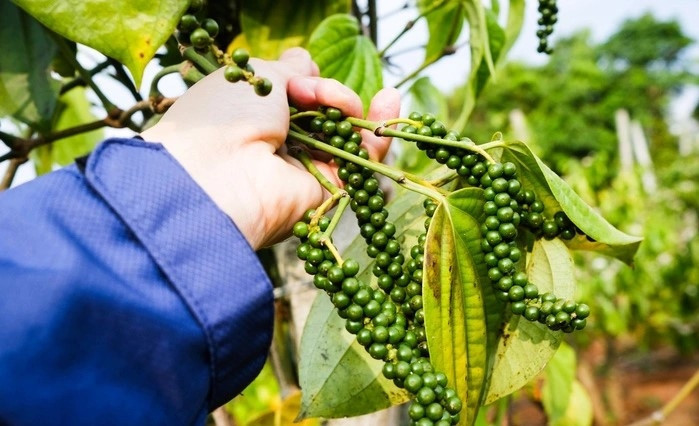According to the Ministry of Agriculture and Environment, as of late June, the 2025 pepper harvest has concluded with a total cultivation area of about 110,600 hectares. Compared to 2024, this marks a 1,000-hectare expansion and an increase of 11,800 tons in output.
Pepper prices have shown significant volatility, trending upward in recent sessions. As of July 3, domestic prices ranged from 140,000 to 147,000 VND per kilogram (approximately USD 5.50 - 5.80/kg). Export prices for black pepper stood between USD 6,240 and 6,370 per ton, while white pepper fetched up to USD 8,950 per ton.
In the first half of 2025, Vietnam exported 124,900 tons of pepper, earning USD 859.6 million. Although export volume declined by 12.4% year-on-year, revenue jumped 35.7%, with average export prices rising to USD 6,881 per ton - a 54.8% increase from the same period last year.
The ministry reported that the United States, Germany, and India were Vietnam’s top three pepper markets, accounting for 26.8%, 9.2%, and 7.7% of total export value, respectively. Compared to the first five months of 2024, export revenue to the US rose by 34.8%, Germany by 73.7%, and India by 86.7%.
Among the 15 largest import markets, the UK saw the most significant growth, with pepper imports from Vietnam more than doubling. The Netherlands, however, recorded a 12.5% decline in import value.
Despite these gains, challenges loom for the remainder of 2025. The US is set to impose import tariffs on pepper, potentially giving a competitive edge to exporters from Indonesia and Brazil.
To meet the export revenue target of USD 1.35 billion for 2025, the ministry advises Vietnamese exporters to fulfill signed contracts promptly to avoid stockpiles and shipping delays. It also recommends expanding to European, Asian, and Middle Eastern markets to reduce reliance on the US.
Additionally, the ministry emphasized the importance of safeguarding social welfare in pepper-growing regions and maintaining stable production zones and yields.
Currently, many farmers and traders are holding back stock in hopes of higher prices in the latter half of the year, causing a temporary supply dip. Speculation around future price increases is fueling this cautious approach.
Globally, rising logistics costs, escalating geopolitical conflicts, and a strengthening US dollar are adding short-term pressure to pepper prices, prompting greater investor caution.
Tam An
